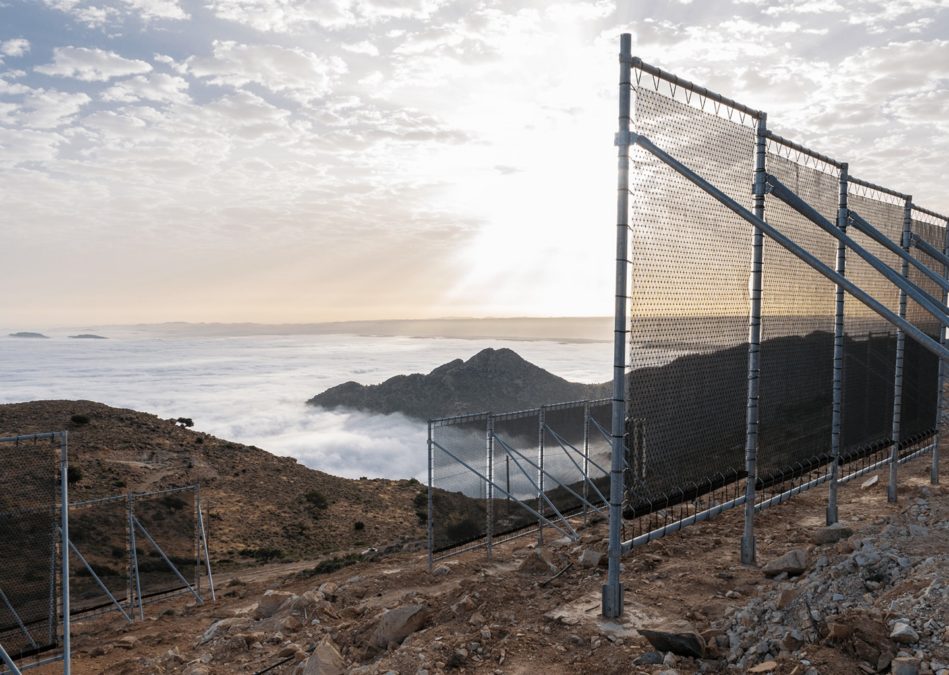Walking in the fog
Thanks to one woman, drinking water from clouds comes to families in the mountains
It almost never rains in the mountains of the Anti-Atlas in Southern Morocco. The desert in the East of the mountain range is expanding all the time. It is getting drier and drier and many wells dry up in the dry season. In the families belonging to the Amazigh people who live in the mountains, the women are responsible for collecting water. For years, this meant for them: Their almost daily kilometre-long marches on foot became increasingly long because they had to walk further into the valley to find some water.
“The women are very afraid of the water running out. They told me that they sometimes went thirsty and instead gave the little water to their children, the elderly in the household and their animals.”
Jamila Bargach, Dar Si Hmad
Jamila Bargach from the Moroccan Dar Si Hmad Foundation has been working in the mountain villages for many years. She is responsible for an innovative project. Enormous nets are used to extract drinking water from the fog for some 1000 people in the surrounding villages. The water flows directly into each house. Since the women no longer have to walk for hours to the wells, they now have more time, says Bargach.
Over a decade ago, Jamila Bargach gave up her job as Professor in the capital of Morocco to establish the Dar Si Hmad Foundation together with her husband. The project has not only changed the lives of the women. Her work with fog moves her, too.
Jamila Bargach lives and works mainly in the large city of Agadir, some four hours away from the mountain villages. Fog collectors are everywhere to be seen in her NGO. You can see large models of the nets in several rooms, even in the women´s toilet.
Yet her work is far more than just the nets: Bargach also holds weekly workshops for young men and women. It is about forging an identity and developing confidence – as well as about the role of women in Morocco.
The United Nations had already awarded Jamila Bargach and her NGO with its climate change prize “Women for Results” in 2016. At the start of the second construction phase in March 2018, Jamila Bargach now participates in a convention run by the UN organisation UN Women in New York. At many other international events, she has already reported on how the fog nets have changed the life of women in the mountain villages as well as her own.
The German WasserStiftung (WaterFoundation) also played a key role in the innovative project: They tested and built the nets. They were supported by the Technical University of Munich, the Munich Re Stiftung, the German Ministry of Development, the German Association of Water and Gas Facilities (DVGW) as well as several international universities, foundations and private donors. Further nets have been added since March 2018. The nets were making history in the Moroccan mountain villages even after completion of the first construction phase: According to Jamila Bargach, they are the world´s largest project of this kind.

A multi-media project by Fatma Zahra Abderrahim and Elisa Miebach | Film material of the fog in the mountains: Norbert Guthier and aqualonis: Peter Trautwein | Photos of the fog nets and the fog in the mountains: aqualonis: Peter Trautwein. CloudFisher© is a registered trademark of the WasserStiftung | photo village: Dar Si Hmad Foundation